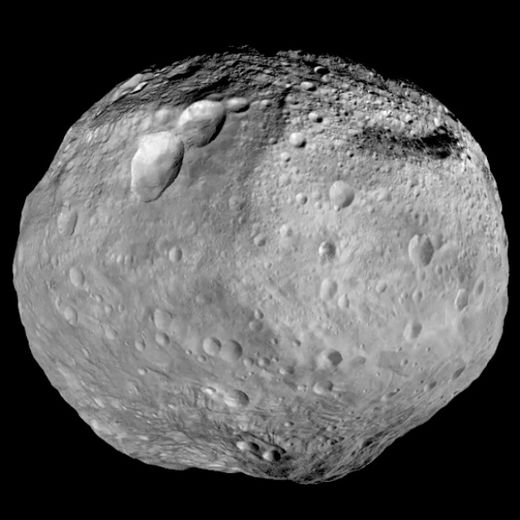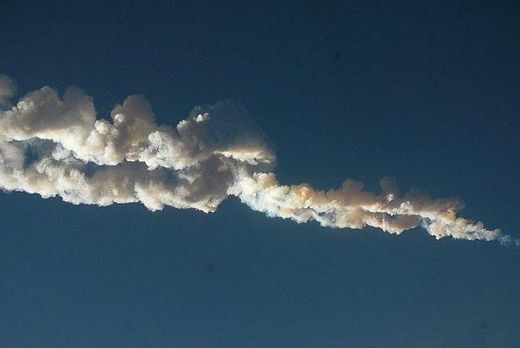Definitely a heads-up situation: According to NASA’s Near Earth Object Program, there will be 43 asteroids flying close to Earth in January and 25 in February. In March, the number further drops to 15.
Category Archives: Science
58 Cognitive biases that screw up everything we do
You think that you can think with the way you think? Or that you are in charge in there? Think again!
58 Cognitive biases that screw up everything we do
We like to think we’re rational human beings.
In fact, we are prone to hundreds of proven biases that cause us to think and act irrationally, and even thinking we’re rational despite evidence of irrationality in others is known as blind spot bias.
The study of how often human beings do irrational things was enough for psychologists Daniel Kahneman to win the Nobel Prize in Economics, and it opened the rapidly expanding field of behavioral economics. Similar insights are also reshaping everything from marketing to criminology
Hoping to clue you – and ourselves – into the biases that frame our decisions, we’ve collected a long list of the most notable ones.
‘We do not seem to have the correct theory of gravity’ says professor
They can’t figure things out because they reject the Electric Universe theory and Plasma Cosmology. For more information, check out Pierre Lescaudron and my new book, Earth Changes and the Human-Cosmic Connection.
‘We do not seem to have the correct theory of gravity’ says professor
Satellite dwarf galaxies at the edges of the Milky Way and neighboring Andromeda defy the accepted model of galaxy formation, and recent attempts to pigeon-hole them into the model are flawed, an international team of scientists reports.
The mismatch raises questions about the accuracy of the standard model of cosmology, which is the widely accepted paradigm for the origin and evolution of the universe, the astrophysicists say.
A preprint of the research paper, accepted for publication by the Monthly Notices of the Royal Astronomical Society, is online here.
The standard model, also called the “lambda cold dark matter model,” says that satellite dwarf galaxies in the Milky Way and Andromeda are expected to behave a certain way: The galaxies would form in halos of dark matter, be widely distributed and would have to move in random directions, said Marcel Pawlowski, a postdoctoral researcher in the astronomy department at Case Western Reserve University and lead author of the new study.
“But what astronomers see is different,” Pawlowski said. “We see the satellite galaxies are in a huge disk and moving in the same direction within this disk, like the planets in our solar system moving in a thin plane in one direction around the sun. That’s unexpected and could be a real problem.”
No reason at all to limit saturated fat in the diet according to the largest most comprehensive review
Mainstream science is finally admitting they got it all wrong – but millions upon millions of people are suffering the consequences of corrupt/junk science. Maybe some consequences would teach them to be more careful and not use humanity as a big experiment.
Conventional nutritional advice varies a bit depending on who you ask, but there are a few constants. One is the importance of limiting saturated fat in favour of polyunsaturated fat. Most Governments, doctors and dieticians would therefore have us eschew foods such as red meat, dairy products and butter in favour of vegetable oils, oily fish and margarine.
 This week saw the publication of the largest and most comprehensive review to assess the relationship between specific dietary fats and heart health, as well as the evidence for the supposed benefits of supplementing the diet with polyunsaturated fats [1]. The study was carried out by researchers from the University of Cambridge and MedicalResearchCouncil,University of Oxford, Imperial College London, University of Bristol, Erasmus University Medical Centre and Harvard School of Public Health, and was partly funded by the British Heart Foundation.
This week saw the publication of the largest and most comprehensive review to assess the relationship between specific dietary fats and heart health, as well as the evidence for the supposed benefits of supplementing the diet with polyunsaturated fats [1]. The study was carried out by researchers from the University of Cambridge and MedicalResearchCouncil,University of Oxford, Imperial College London, University of Bristol, Erasmus University Medical Centre and Harvard School of Public Health, and was partly funded by the British Heart Foundation.The study brought together two types of evidence:
1. Epidemiological evidence
Evidence where associations between different fats in the diet and risk of heart disease were assessed.
This sort of evidence itself came in two types:
a. studies where associations between dietary intake of specific fats and heart disease were assessed
b. studies where associations between body levels of specific fats (e.g. as measured in the blood) and heart disease were assessed
2. Randomised controlled trials
Where individuals were treated with specific dietary fats to see what effect this had on heart disease risk over time.
45 epidemiological and 27 randomised controlled trials were pooled in this review. The total number of subjects involved in these studies was more than 650,000.
Here’s a summary of the results:
Epidemiological studies of dietary fat and heart disease risk:
Saturated fats – No association
Monounsaturated fats – No association
Omega-3 fats – No association
Omega-6 fats – No association
Trans fatty acids – Increased risk
Epidemiological studies of body levels of specific fats and heart disease risk:
Saturated fat – No association other than one specific type of saturated fat (margaric acid) that was associated with reduced risk
Monounsaturated fat – No association
Omega-3 fats – Reduced risk
Omega-6 fats – No association other than arachidonic acid (found in meat, eggs and dairy products) which was associated with reduced risk
Trans fatty acids – No association
Randomised controlled trials of supplementation with:
Alpha-linolenic acid (a type of omega-3 fat found in plants including flaxseed/linseed) – No reduction in risk
Omgea-3 fats such as those found in oily fish – No reduction in risk
Omega-6 fats such as those found in vegetable oils – No reduction in risk
The authors of the review conclude:
…the pattern of findings from this analysis did not yield clearly supportive evidence for current cardiovascular guidelines that encourage high consumption of polyunsaturated fatty acids and low consumption of saturated fats. Nutritional guidelines on fatty acids and cardiovascular guidelines may require reappraisal to reflect the current evidence.
Should we be surprised?
Female Psychopathy
Recently, we began looking into Female psychopathy. The results were surprising. We had thought that you just look for the same thing in women as is seen in male psychopaths. Not so! We learned that women psychopaths preferentially utilize the “poor pitiful me, I was/am abused” pity ploy to entrap their victims. They may set themselves up as activists of various kinds to display their “compassion” and utilize this as the platform for launching their “I was abused so I know how it feels” games. Altogether an interesting revelation.
You can read the discussion here on the Cassiopaea forum.
Risk of asteroid impacts may be more common than expected
They are waking up to reality a day late and a dollar short.
Risk of asteroid impacts may be more common than expected
Rather than expecting an impact every 150 years, researchers believe the risks could be ten times greater.
Researchers warn that the risk of space rocks, like the one that exploded over Russia in February 2013, hitting the Earth is ten times larger than previously estimated.
Using videos from security and dashboard cameras, researchers were able to reconstruct the asteroid and its trajectory through the atmosphere.
Three separate papers out this week agree that the asteroid, which caused an intense flash of blinding light at daybreak on Feb. 15 near the Russian city of Chelyabinsk, was nearly twice as heavy as earlier estimated and had the explosive power of 500,000 tons of TNT.
“Luckily, most of the kinetic energy was absorbed by the atmosphere,” said Jiri Borovicka, an asteroid researcher at the Astronomical Institute near Prague and lead author on a study published in Nature. “A more solid rock that might have blasted closer to the ground would have caused considerably more damage.”
According to Borovicka, the asteroid approached the Earth from a region in the sky that is inaccessible to ground telescopes. The asteroid should have been visible six weeks before the impact, but only during the day, when the sky is too bright to spot objects of its size.
Peter Brown, a planetary scientist at the University of Western Ontario and lead author on a separate paper published in Nature, said that previous models suggested that asteroids like the Chelyabinsk asteroid would hit the earth once every 150 years. But looking at the number of observed impacts over the last 20 years suggests the impact risk could be substantially higher.
Brown suggests that a sensible response to the Chelyabinsk asteroid is scanning the visible sky with asteroid detection and early-warning system like ATLAS, which is currently being developed in Hawaii.
Are you inflamed over GMO foods?
Everything you need to know about GMO and your health. It’s not smoking that is causing the dramatic increase in cancer, heart disease and diabetes.
Are you inflamed over GMO foods?
Several years ago the general public was completely unaware of GMOs and GE foods (genetically modified organisms or genetic engineering), but today the topic is becoming rather well known, thanks to growing education and alternative media coverage. The general public is becoming better informed about the potential harms and health issues associated with biotechnology and bioengineered foods, but the smoke and mirrors the mega-corporations use to obfuscate deeper understanding of the dangers inherent in such ‘mad science’ increases in tandem with growing awareness.
Ok, so a lot of people know they are eating GMO’s and what they are, but the real question is: are GMOs actually safe, as proponents and supporters of biotechnology claim, or are they not? Should we be worried about the long-term health and environmental effects of genetically altered foods? In the following article I hope to present clear evidence and data for stating very definitively: YES! We should be very concerned!
As an organic farmer, agriculture consultant and researcher, I became interested in the GMO issue over seven years ago, particularly their effects on the soil and the contamination or mutation of various plant species. ‘Connecting the dots’, so to speak, it dawned on me how serious this issue is, not just in terms of the environmental effects of GMOs, but also the consequences of eating GMO foods for human health.
A very disturbing picture began to emerge.
As I realized that this ‘genetic engineering’ is essentially a mad science, I joined a local group called ‘Seeds of Truth‘. We began meeting weekly to discuss how to get the word out about the growing takeover of Hawaii’s agricultural lands by several biotechnology corporations.
Brain Tricks – This Is How Your Brain Works
Think you are in charge of your perceptions and reactions? Think again…
Sott Talk Radio: Surviving the Psy-pocalypse: Interview with Stefan Verstappen
Very important discussion. And yes, we do go into weather catastrophes. Bottom line is that preparation is preparation. You prepare for the worst, hope for the best, and deal with what comes (only if you are prepared to). So y’all quit saying that nobody is “telling us what to do”. There’s plenty of advice out there.
This week we’re talking to Stefan Verstappen, Canadian writer, artist, and martial arts expert living in China. Verstappen has a professional background in communications and business management. Since embarking on his travels throughout East Asia, Verstappen has studied oriental art, culture and Kung Fu.
This world traveller is also one of the few people who understands that psychopaths rule our world. Creator of the viral YouTube video documentary ‘Defense Against the Psychopath‘, based on his book The Art of Urban Survival: A Family Safety and Self Defense Manual, Verstappen has lots to share, not only about defending ourselves from the predators in our midst, but also natural disasters and social breakdown.
Global Scaling, Alan Turing and Quantum Enigma
My husband is at it again, only this time, the topic is rather grim – people die when they figure out some things.
Global Scaling, Alan Turing and Quantum Enigma
There may exist technologies that are dangerous to know. Perhaps not just “to know”, but rather “to sell”. Quite often we read about “free energy” and/or “instant communication” technologies. There is usually some kind of a scam involved nearby. That does not necessarily mean that there is nothing but scam. What is true and what is not – that’s the million dollar question. Hartmut Müller’s “Global Scaling” is one such example, as we will see below.
Usually there is some kind of a “theory” going around, a “theory” that tries to package the claims of those who patent, produce and try to sell extraordinary gadgets into attractive and colorful shiny boxes. Without a theory, who will buy them? The same, or almost the same gadget can be wrapped up in different theories in different parts of the world. These theories more often than not claim to be based on some mathematics and some physics. Since I am both, a little bit of a mathematician and a little bit of a physicist, trying to be rationally irrational and open-minded, I like to read all the “strange” stuff that I can find. And what I read, I share.
Just before Christmas I ordered a book by A. G. Parkhomov “Earth, Cosmos, Man” – only available in Russian – so it’s a lucky thing that I learned to speak and read Russian almost before I learned my mother tongue, Polish. I hope to write more about Parkhomov’s exciting research on nuclear phenomena after studying his book. But it is only this morning that I received an email telling me that the book has been shipped. Therefore I had to change my plans and reschedule my posting of articles in this series. Which is not that difficult because there are lots of exciting new things that happen every day and that are worth sharing.




